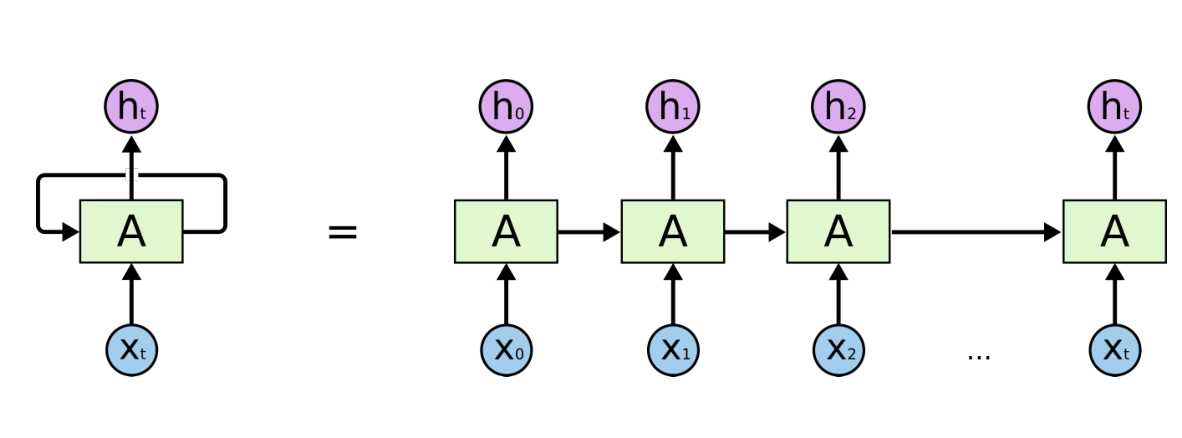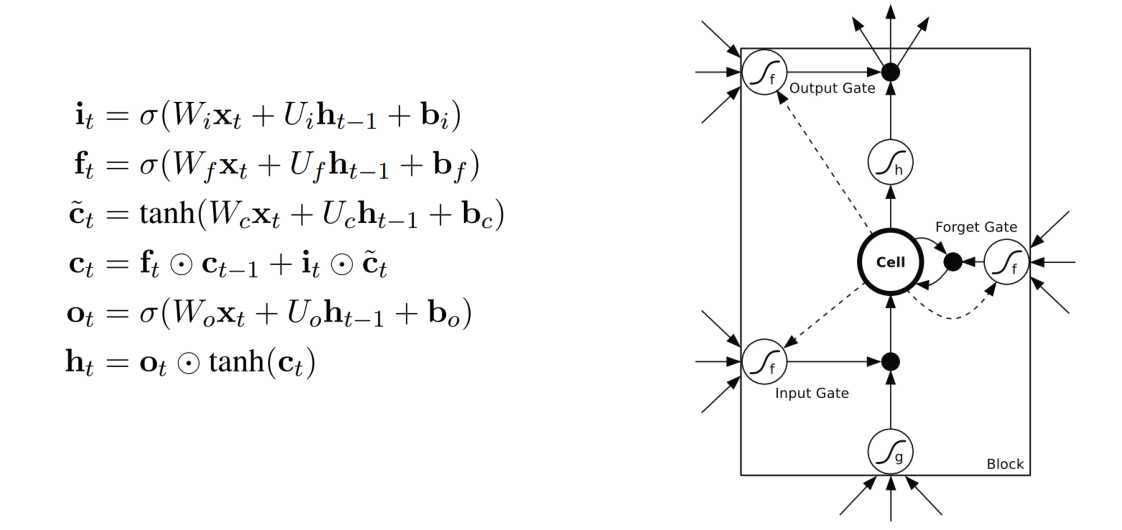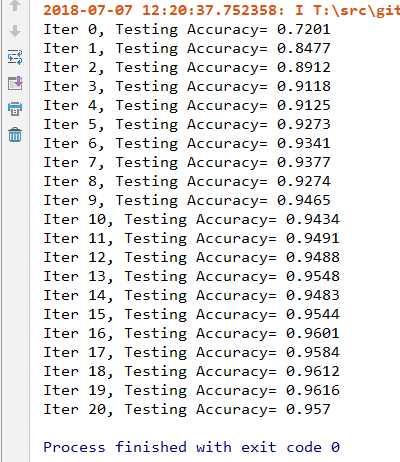TensorFlow——LSTM長短期記憶神經網絡處理Mnist數據集
阿新 • • 發佈:2018-07-07
data 多少 cross 10個 argmax UNC pri 最大的 像素點
1、RNN(Recurrent Neural Network)循環神經網絡模型

詳見RNN循環神經網絡:https://www.cnblogs.com/pinard/p/6509630.html
2、LSTM(Long Short Term Memory)長短期記憶神經網絡模型


import tensorflow as tf
from tensorflow.examples.tutorials.mnist import input_data
from tensorflow.contrib import rnn
# 載入數據集
mnist = input_data.read_data_sets("MNIST_data/", one_hot=True)
# 輸入圖片是28*28
n_inputs = 28 # 輸入一行,一行有28個數據(28個像素點),即輸入序列長度為28
max_time = 28 # 一共28行
lstm_size = 100 # 隱層單元
n_classes = 10 # 10個分類
batch_size = 50 # 每批次50個樣本
n_batch = mnist.train.num_examples // batch_size # 計算一共有多少個批次
# 這裏的none表示第一個維度可以是任意的長度
x = tf.placeholder(tf.float32, [None, 784])
# 正確的標簽
y = tf.placeholder(tf.float32, [None, 10])
# 初始化權值
weights = tf.Variable(tf.truncated_normal([lstm_size, n_classes], stddev=0.1))
# 初始化偏置值
biases = tf.Variable(tf.constant(0.1, shape=[n_classes]))
# 定義RNN網絡
def RNN(X, weights, biases):
inputs = tf.reshape(X, [-1, max_time, n_inputs])
# 定義LSTM基本CELL
lstm_cell = rnn.BasicLSTMCell(lstm_size)
# final_state[0]是cell state
# final_state[1]是hidden_state
outputs, final_state = tf.nn.dynamic_rnn(lstm_cell, inputs, dtype=tf.float32)
results = tf.nn.softmax(tf.matmul(final_state[1], weights) + biases)
return results
# 計算RNN的返回結果
prediction = RNN(x, weights, biases)
# 損失函數
cross_entropy = tf.reduce_mean(tf.nn.softmax_cross_entropy_with_logits(logits=prediction, labels=y))
# 使用AdamOptimizer進行優化
train_step = tf.train.AdamOptimizer(1e-4).minimize(cross_entropy)
# 結果存放在一個布爾型列表中
correct_prediction = tf.equal(tf.argmax(y, 1), tf.argmax(prediction, 1)) # argmax返回一維張量中最大的值所在的位置
# 求準確率
accuracy = tf.reduce_mean(tf.cast(correct_prediction, tf.float32)) # 把correct_prediction變為float32類型
# 初始化
init = tf.global_variables_initializer()
with tf.Session() as sess:
sess.run(init)
for epoch in range(21):
for batch in range(n_batch):
batch_xs, batch_ys = mnist.train.next_batch(batch_size)
sess.run(train_step, feed_dict={x: batch_xs, y: batch_ys})
acc = sess.run(accuracy, feed_dict={x: mnist.test.images, y: mnist.test.labels})
print("Iter " + str(epoch) + ", Testing Accuracy= " + str(acc))
結果為:

TensorFlow——LSTM長短期記憶神經網絡處理Mnist數據集
